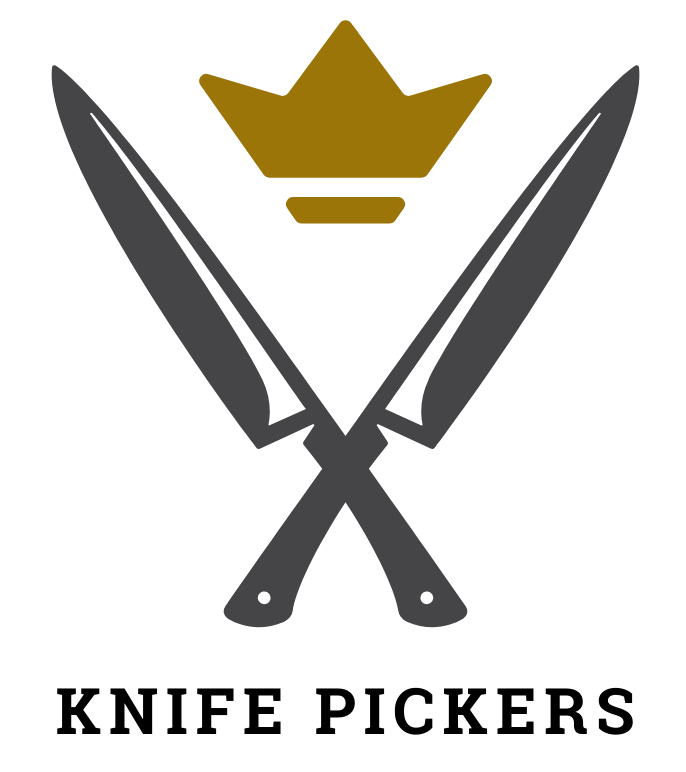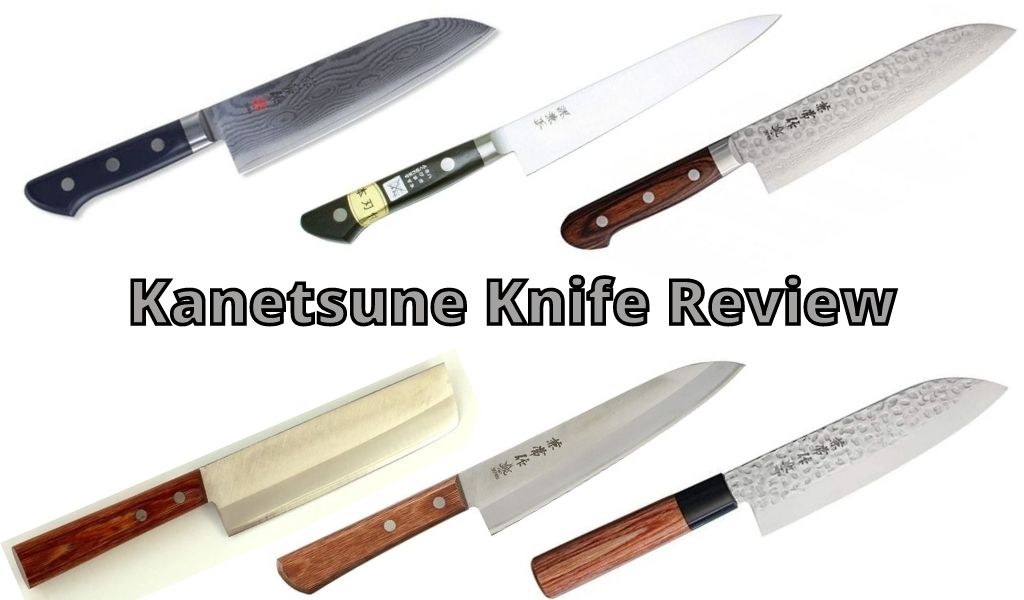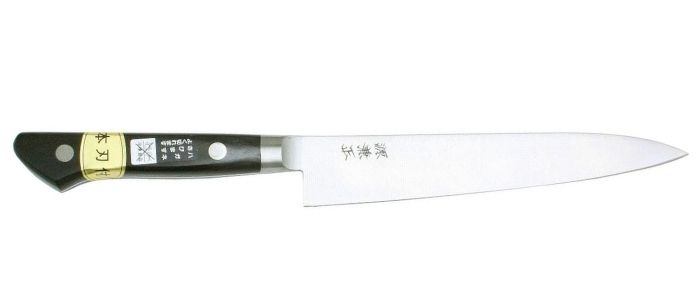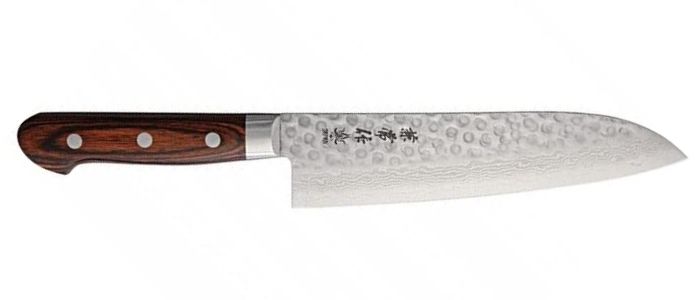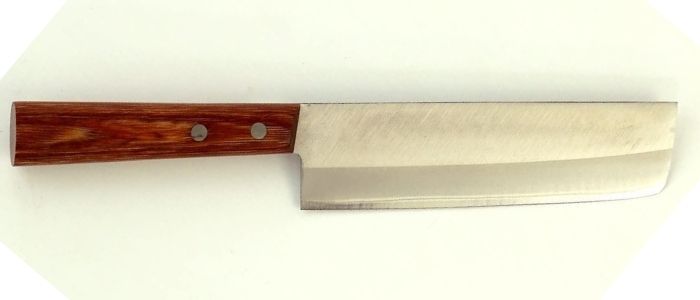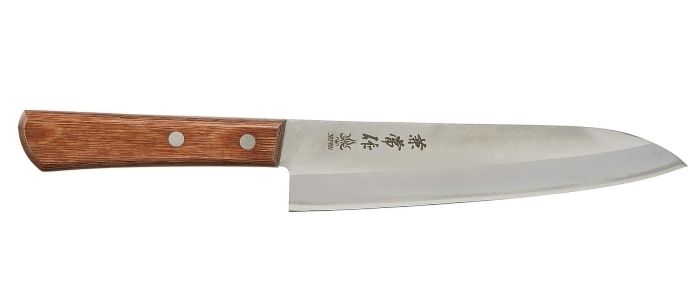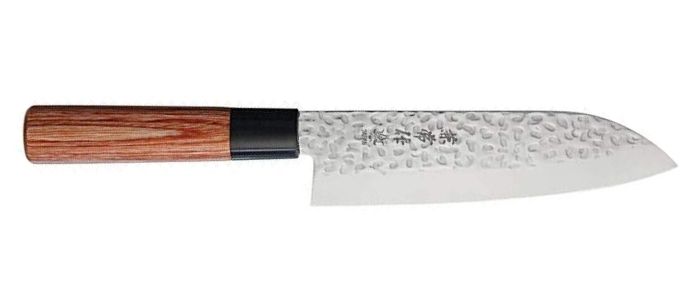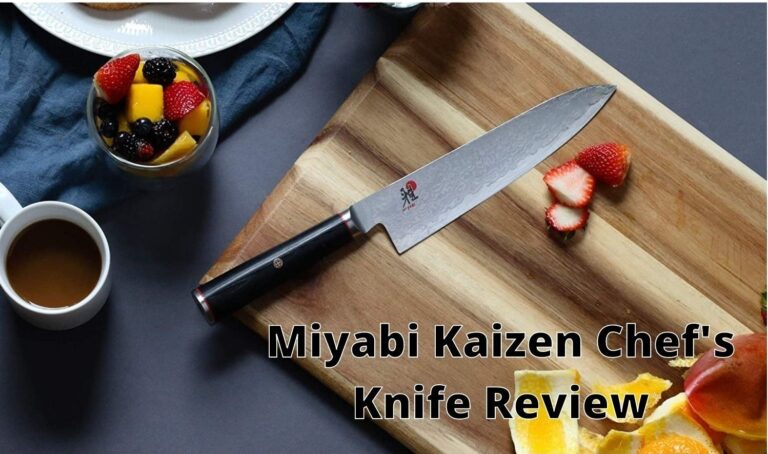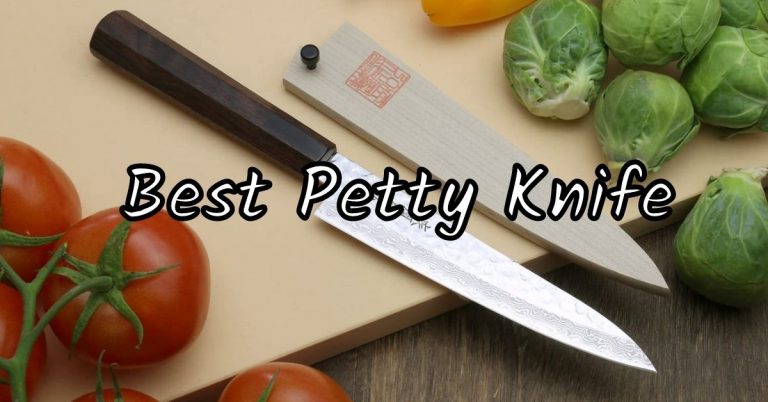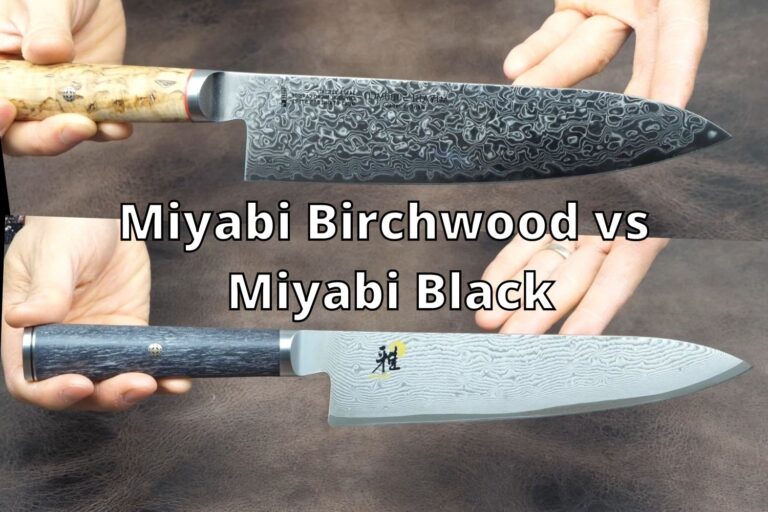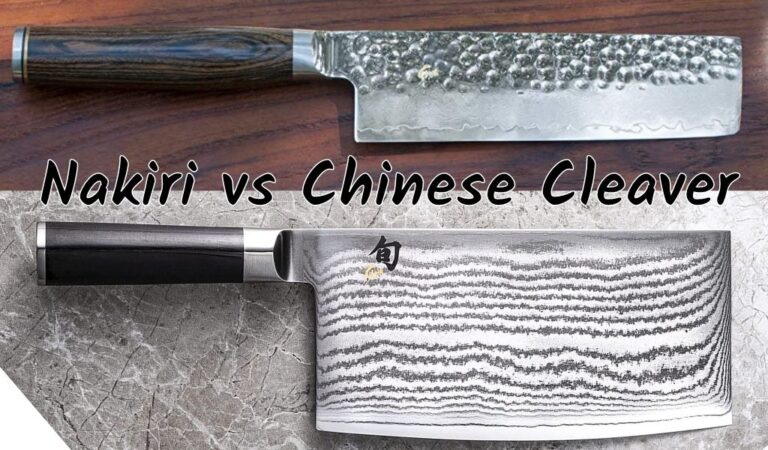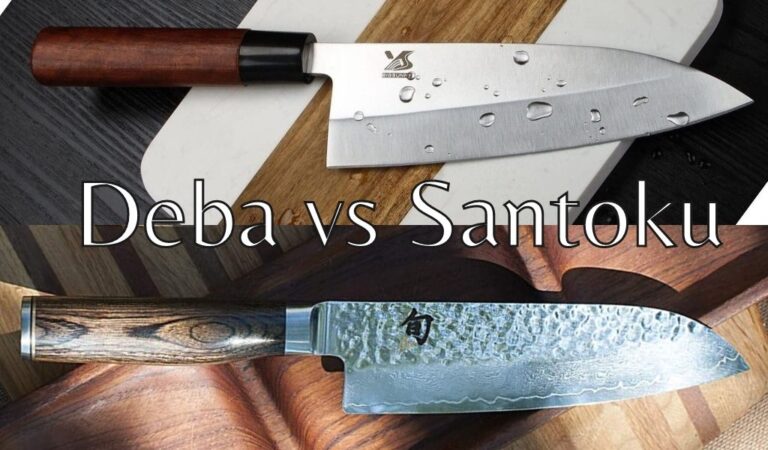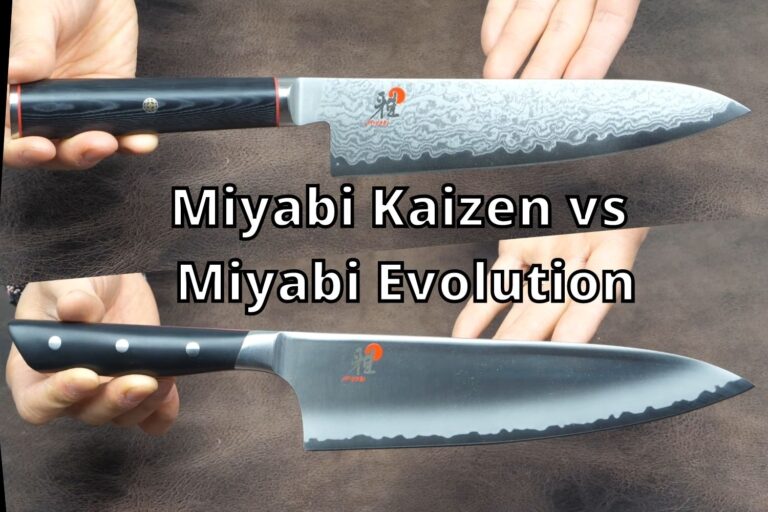If you are looking for a knife and came across a kanetsune knife then you must have researched a lot about knives. Because Kanetsune is not a world-renowned knife brand but they are crafting quality knives for years. They are using Japanese knife-making technologies and quality material in every piece of the knife. They have a large collection of varieties of knives for different working purposes. Moreover, kanetsune has something good to offer to every kind of knife user.
Let’s look for some best kanetsune knives and go through their every feature in this kanetsune chef knife review. Here you will also find a quick overview table about those kanetsune knives then a detailed review.
Quick Overview Table: Kanetsune chef knives review
If you are in hurry then before going through an in-depth review you can go through this quick overview table.
| Kanetsune | Seki Damascus Knife | Minamoto Kanemasa | Classic Damascus Knife | KC-321 Nakiri knife | KC-352 kitchen knife | KC-952 Santoku knife |
| Knife Type | Chef Knife | Petty knife | Santoku chef knife | Nakiri knife | Kitchen Knife | Santoku knife |
| Blade Material | 3 layers of VG-10 steel | High carbon 2N alloy steel | Vg10 steel with Damascus steel layers | Takefu Shiro with SUS410 stainless steel | Takefu Shiro with SUS410 stainless steel | DSR-1k6 stainless steel |
| Blade Design | Damascus Pattern | Plain finished | Damascus Pattern | Plain Mirror finish | Plain Mirror finish | Hammered finish |
| Handle Material | Polymar based material | Plywood | Mahogany | Plywood | Plywood | Wood |
| Handle Desing | Triple-riveted ergonomically | Ergonomic double riveted | Ergonomic triple-riveted | Double riveted ergonomic | Double riveted ergonomic | Straight handle |
| Hardness | 60-61 | 59-60 | 60 – 61 | 62-63 | 62-63 | 60 |
| Price | More Expensive (Price on Amazon) | Less Expensive (Price on Amazon) | Average Expensive (Price on Amazon) | Less Expensive (Price on Amazon) | Less Expensive (Price on Amazon) | Less Expensive (Price on Amazon) |
Detailed Kanetsune Seki Knife Review
1. Kanetsune Seki Knife Review ( Damascus Chef knife)
With a combination of quality material, beautiful Damascus pattern, and razor-sharp edge this chef knife is one of the best and renowned knives of kanetsune.
The blade core of this knife is made with VG-10 stainless steel which is also known as ‘ super stainless steel’. This VG-10 steel is very popular among Japanese knife makers because of its durability and hardness. There is a high amount of carbon component in this steel that makes it tough hard and durable.
There is a total of 3 layers of VG10 steel in the blade. The sided two layers of steel protect the cutting core layer from extra pressure or damage.
When it comes to blade design, in one word it looks gorgeous. The whole balde is covered with a flower Damascus pattern. These dark Damascus lines are clearly visible and there is a kanetsune logo on the balde. The cutting edge is plain and mirrors polished. The knife is a full tang knife that means a part of the balde goes all the way through the handle. Tang contributes to the durability and balance of a knife.
Seki santoku features a dark blue ergonomic shaped handle. Moreover, the handle is triple-riveted which means there are three pins in the handle. Those pins hold the handle more tightly to the tang. There is a thicker portion at the end of the handle. Those parts prevent the slipping of the knife while using.
The material that is used in the handle is a polymer-type material. That is water and moisture resistant so it lasts for long.
Finally, the weight of this knife is properly distributed so it features proper balancing. With proper balancing sharp edge cutting, this knife is obviously one of the top knives on this Kanetsune seki knife review list.
Key Features:
- Balde core is made with VG-10 super steel.
- There are 3 layers of steel used in the balde.
- The full body is covered with a dark Damascus pattern.
- If features a triple-riveted ergonomic handle
- The knife is made in japan.
Pros:
- The hard blade retains its edge for very long.
- It provides proper balancing while working.
- Razor-sharp edge ensures precise cut.
- This knife is easy to handle and maintain.
- The ergonomic handle feels comfortable in grip.
Cons:
- The edge is too sharp so it needs extra care while storing.
2. Kanetsune Minamoto Kanemasa Review ( Petty Knife)
This kanetsune knife is a proper combination of quality material and affordability.It is a super lightweight beautiful knife with tough hard stainless steel balde.
The blade core of this chef knife is made with the finest grade 2N Japanese high carbon steel. The high carbon steel used in the knife gives it greater cutting performance and tough hardness.
When it comes to the balde design, it features a plain mirror finish. Moreover, it has a shiny look with a logo of kanetsune. And the knife has a longer shape that can handle a wide range of work.
Quality material adds quality features to a knife. Same for Kanetsune Minamoto, as high carbon steel is used for this knife it has tough hardness. On the Rockwell hardness scale, this petty knife has 59 to 60 hardness.
Now comes the handel, which is made with plywood. Black plywood is used for the knife that gives it a slipless and comfortable grip.
The handle features an ergonomic shape. Moreover, the handle is double reverted. These two-pin hold the handle more tightly with the tang of the knife. One thing to mention is that it is a full tang knife. There is a thicker portion at the end of the handle that prevents slipping of the knife while using.
Another amazing feature of this knife is that it comes with a saya cover or sheath. That can give the knife proper protection while storing.
Key Features:
- The blade core is made with High carbon 2N steel.
- Handle features an ergonomic shape.
- It is super lightweight with only 3.17 ounces.
- This knife has a 59-60 Rockwell hardness.
- Comes with a sheath.
Pros:
- The knife is very lightweight so it gives fatigue-free work for a long time.
- Handle provides a slipless and comfortable grip.
- It is very sharp that provides precise cutting.
- It retains its edge for a long.
Cons:
- The knife is not dishwasher safe so you have to only hand wash it after every use.
3. Kanetsune Classic Damascus Knife Review ( Santoku chef knife)
With a Damascus finish and wooden handle, this knife is one of the most high-end santoku knives of this Kanetsune Damascus review. It features a traditional classic look.
The blade core of this knife is made with high-quality VG 10 steel. It is the same steel used in the kanetsune saki knife. And the core is wrapped by layers of Damascus stainless steel. Those layers give protection to the core and protect it from heavy pressure and cutting.
You will find a beautiful Damascus pattern throughout the whole body of the knife. That Damascus pattern looks like round dimples through the whole knife. And cutting edge is quite straight tath gives a large cutting area.
Fine quality vg10 steel ensures tough hardness to the knife that is 60 to 61 on the Rockwell scale. So, it retains its edge more than most other knives of this Kanetsune knife review. And Like the first two knives of this Kanetsune knives review, this chef knife is also a full tang knife.
Now comes the handle, which is made from Mahogany wood. This kind of wood is very rarely used in such kinds of knives. You will feel the wooden texture of the handle.
Its handle features an ergonomic triple-riveted handle. There are three pins that make the handle more durable. The handle has a natural brown wooden look with black lines. At the end of the handle, there is a thicker extension that prevents slipping of grip. Moreover, there is a stainless steel bolster that adds durability to the knife along with beauty.
Key features:
- Balde core is made with high end VG10 steel.
- Blade core is protected by layers of damascus stainless steel.
- Handle is made with Mahagony wood.
- It has 60 to 61 rockwell hardness.
Pros:
- Handle provides a comfortable grip for both left and right-handed people.
- This knife has a perfect balancing and weight distribution.
- The knife is very hard and retains its edge for long.
- The sharp edge can handle wide range of work.
Cons:
- The wooden handle needs a little extra care than the resin or polymer handle.
4. Kanetsune Nakiri Knife Review ( KC – 321)
This nakiri knife is the most famous and affordable nakiri knife crafted by Kanetsune.
The blade core of this nakiri knife is made with high carbon stainless steel. High carbon Takefu Shiro 2 steel is used for it that is also known as 410 stainless steel. In addition to this hardcore, there are layers of SUS410 stainless steel that wrap the core. These layers of steel protect the core from damage and pressure.
This knife is too much hardness as a nakiri knife. We don’t usually see that these kinds of hard steel are being used in nakiri knives that are mainly used to cut vegetables. On the Rockwell scale, this knife has hardness between 62 to 63. That is harder than any other knives of this Kanetsune review. This hardness is more than enough for a vegetable knife. So, you can obviously use this knife for meat and other cuttings.
This whole balde has a plain mirror finish with a Kanetsune logo. And the balde features a usual shaps as japanese nakiri knives with a straingh cutting edge. You can clearly differentiate the cutting edge from the whole blade.
Its handle is made from brown plywood that has a look like natural wood.
If you ask about the handle design and grip. Then the answer will be this knife has a very simple and classic handle design. The handle features a straight shape and there are two pins in the handle which makes the handle more durable. And the handle provides a pretty comfortable grip to users.
The knife is extremely lightweight with only 5.3 ounces. So, with the combination of sharp edge and lightweight, this knife can provide pressure-free work for a long time.
One more thing is that this knife comes with a beautiful box. So, it can be a great gift to any of your friends.
Key Features:
- Blade Core is made with high carbon Takefu Shiro 2 steel.
- The core is wrapped by SUS410 steel
- It has tough hardness of 62 to 63 in rockwell scale.
- Handle is made with brown plywood.
Pros:
- It retains its edge for a long.
- The handle is easy to hold and work on.
- The knife is pretty lightweight and provides pressure-free cutting.
- Though it is a nakiri knife it can handle a wide range of cutting.
Cons:
- The plywood and wooden handle need a little bit of extra care.
5. Kanetsune KC Series Kitchen Knife Review (KC- 352)
KC knife series of kanetsune is one of the most simple-looking and affordable knife series of kanetsune. This KC kitchen knife is the chef knife version of the nakiri knife(KC-321) of this kanetsune chef knife review list. They both have the same building material and quality.
The balde core is made with Takefu Shiro steel which is high carbon steel. And the core is protected by SUS410 stainless steel. Like the nakiri one, this knife also has super tough Rockwell hardness. That is almost 62 to 63 on the Rockwell scale. So, it retains its edge sharp for long as the sharpness retention of a knife depends on the hardness of the material.
The blade has a simple look with a plain mirror finish. Moreover, there is an engraved kanetsune logo that looks more eye-catchy than most other kanetsune knives of this Kanetsune chef knives review. And the balde features a shape like usual Japanese knives.
Handle material is also the same as used in the KC- 321 kanetsue nakiri knife. The handle is made from brown plywood and it has an ergonomic shape. There are two pins that hold the handle with the tang.
So, with the combination of quality features and affordability, this knife is quite the perfect knife for any chef or home cook.
Key Features:
- The blade core is made with Takefu Shiro high carbon steel.
- Blade core is protected by layers of SUS410 steel.
- The handle is made with plywood.
- It features 62 -63 Rockwell hardness.
Pros:
- The knife is lightweight that provides fatigue-free work for a long.
- Hard balde retains its edge sharp for long.
- Handle fits nicely in the grip.
- The sharp edge can cut through anything precisely.
Cons:
- Plywood handle needs extra care.
6. Kanetsune KC-952 Santoku Review
A simple-looking knife with a wooden handle and hammered finish blade.
Hammered finish balde is the most amazing feature of this kaetsune santoku knife. The top half portion of the balde is covered with this hammered finish. That creates small air pockets in the blade body. Those air pockets help to prevent food while cutting and make the knife nonsticky.
The stainless steel that is used for the blade is known as DSR-1K6 stainless steel. That has enough hardness to handle any kind of food in the kitchen.
It features a wooden handle with a natural wooden texture. There is also a plastic guard at the holding end of the handle.
The handle features a straight ergonomic shape. It is quite comfortable in hand and the wooden texture prevents slipping while using.
So, With these amazing features this knife is the most affordable knife of this Kanetsune santoku knife review. And it can be a perfect knife for beginners thoes who want to buy a quality knife in a affordable price range.
Key Features:
- Hammered finish through the blade.
- Balde is made with DSR-1K6 stainless steel.
- Handle is made with wood.
Pros:
- The hammered finish makes the knife nonsticky.
- The knife is pretty affordable.
- Handle feels comfortable in grip.
Cons:
- The wooden handle needs extra care than a resin or polymer-based handle.
FAQ
- Are kanetsune knives made in Japan?
Yes, kanetsune knives are crafted in Japan. Kanetsuen knives are made in Seki, Japan. Seki is known as the knife and blade-making capital of japan. Knives and swords are being crafted here for hundreds of years. Kanetsune knives are also crafted by blacksmiths in Japan.
- Are kanetsune knives double bevel or single bevel?
Almost all of the kanetsune knives are double beveled. As mentioned in this Kanetsune knives review, kanetsune knives have the same cutting edge at both sides of the knife.
- Is Kanetsune value for money?
Most of the kanetsune knives are very affordable. And they provide quality material at this affordable price so kanetsune knives are worth their money.
Conclusion
You must have gotten an in-depth idea about different kanetsune knives from this Kanetsune chef knives review. Every specific feature of every knife and its differences were described here. So, it’s time to decide which one is a better choice for you.
If you want a very high-end chef knife then you can go with the first knife of this Kanetsune knife review which is the Kanetsune Seki Damascus chef knife. If you want a knife with a longer blade then look for Minamoto Kanemasa. The Damascus classic santoku is a high-end santoku knife, whereas the last two santoku knives are the most affordable santoku knives of kanetsune. And the last one if you want a nakiri knife then k-321 nakiri is for you.
Other Knives Review:
